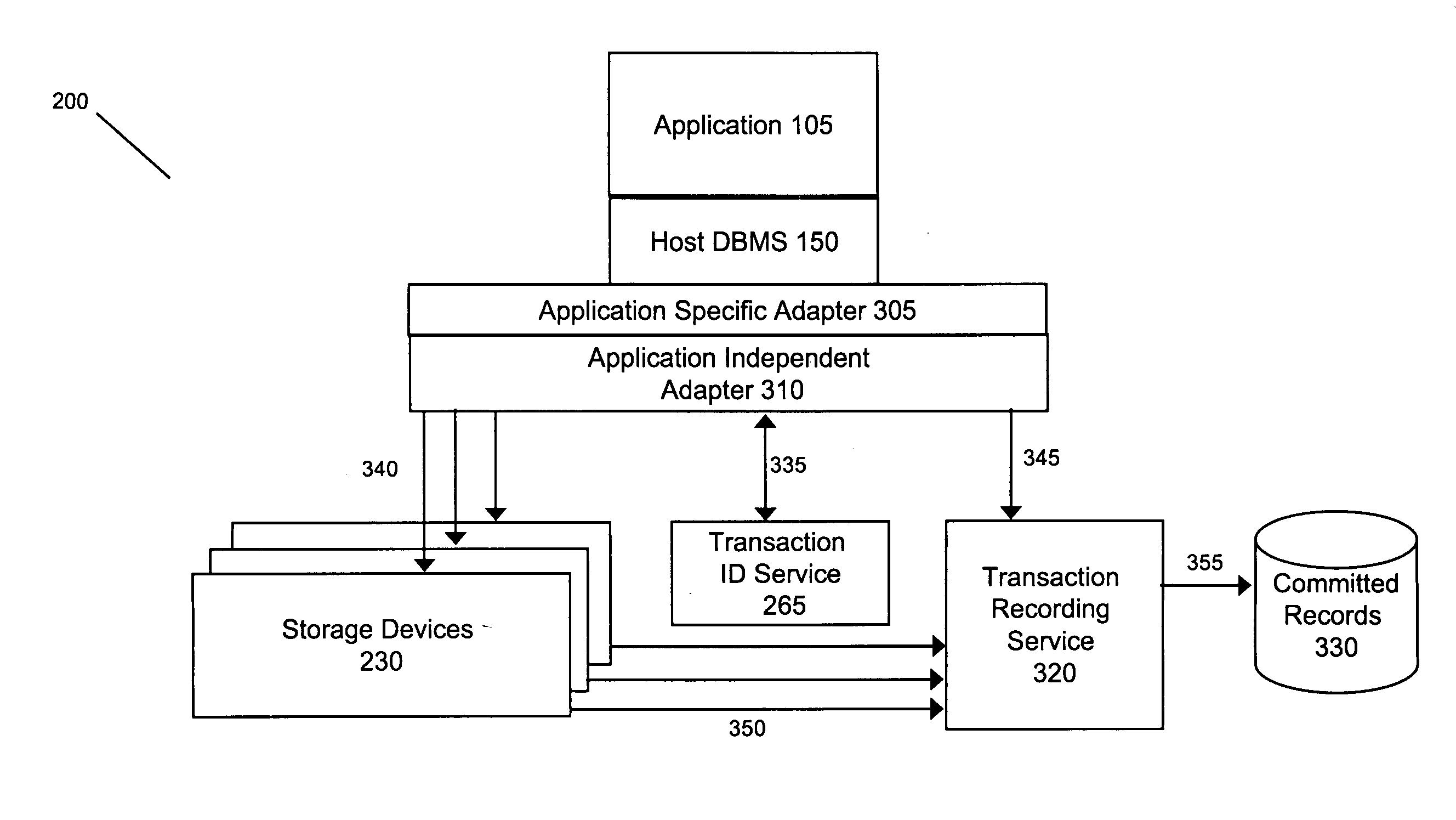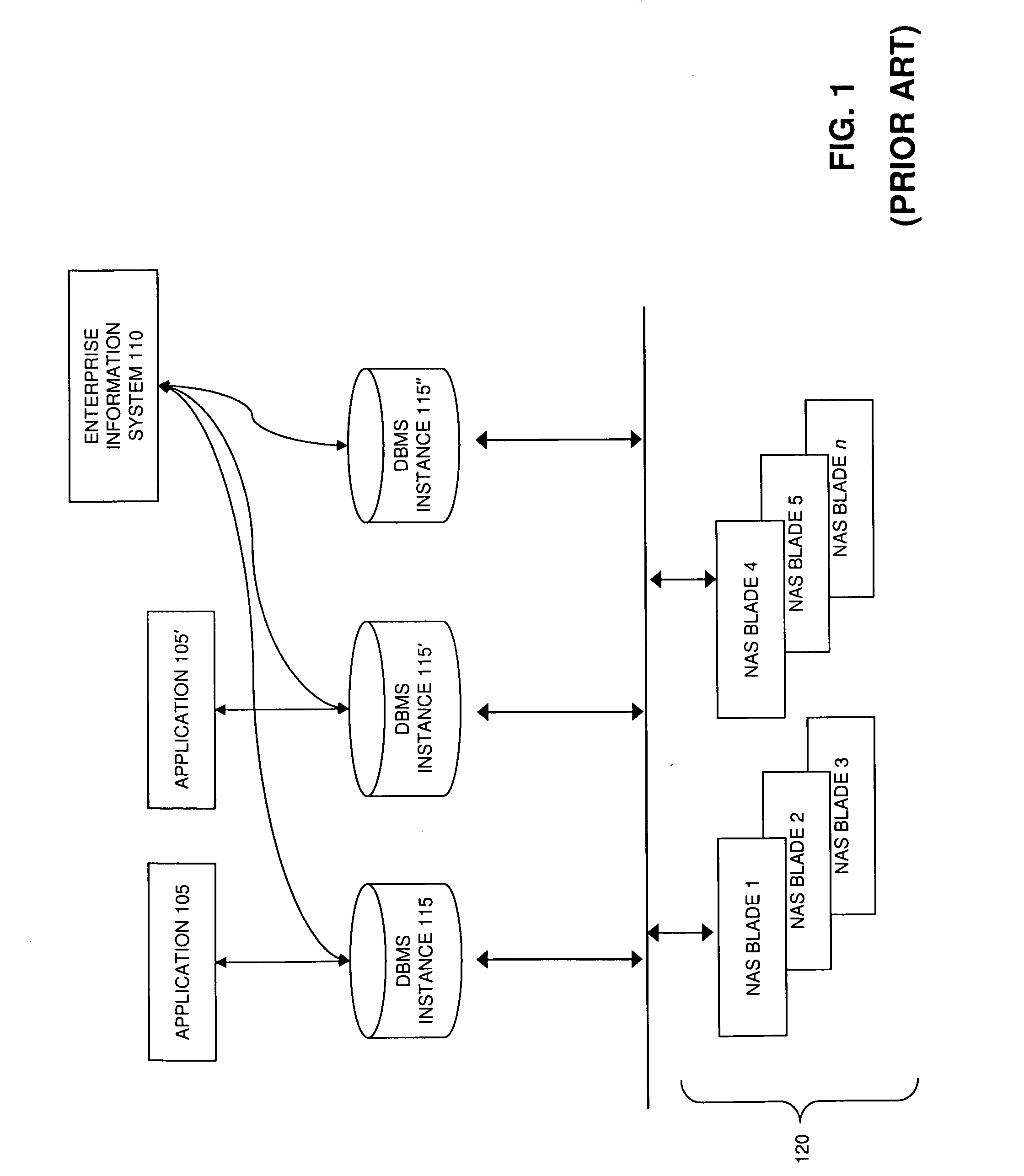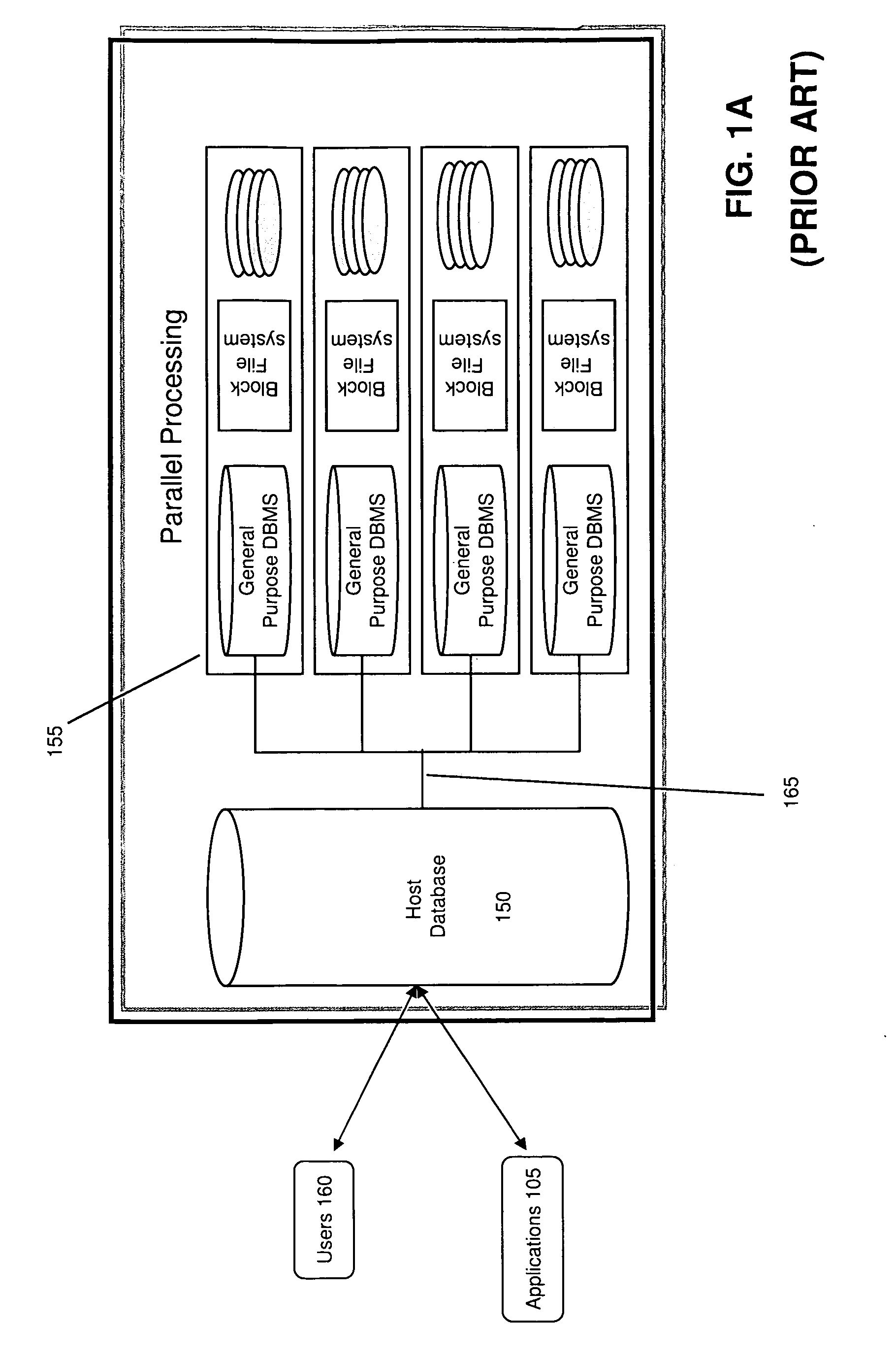Network-attached storage devices
- Summary
- Abstract
- Description
- Claims
- Application Information
AI Technical Summary
Benefits of technology
Problems solved by technology
Method used
Image
Examples
Embodiment Construction
[0031]Referring to FIG. 1, applications 105 and 105′ (generally 105) and enterprise information systems 10 utilize or more database management systems (DBMS) 115, 115′ and 115″ (generally 115) to provide data, configuration information, and user permissions. In certain cases, a single DBMS instance 115 may support a single application 105, whereas in other cases, many applications 105 may rely on one DBMS 115. Frequently, enterprise information systems 110 utilize data from numerous applications (combining data from sales systems, inventory systems, and financial systems into a single executive-level performance dashboard, for example). As used herein the term “applications” may refer to any type of application that uses and / or manipulates data, including enterprise information systems 110. The number and type of applications 105 can vary widely, and include both transactional-based applications (e.g., trading systems, customer service systems, etc.), business intelligence and data ...
PUM
 Login to View More
Login to View More Abstract
Description
Claims
Application Information
 Login to View More
Login to View More - R&D
- Intellectual Property
- Life Sciences
- Materials
- Tech Scout
- Unparalleled Data Quality
- Higher Quality Content
- 60% Fewer Hallucinations
Browse by: Latest US Patents, China's latest patents, Technical Efficacy Thesaurus, Application Domain, Technology Topic, Popular Technical Reports.
© 2025 PatSnap. All rights reserved.Legal|Privacy policy|Modern Slavery Act Transparency Statement|Sitemap|About US| Contact US: help@patsnap.com



